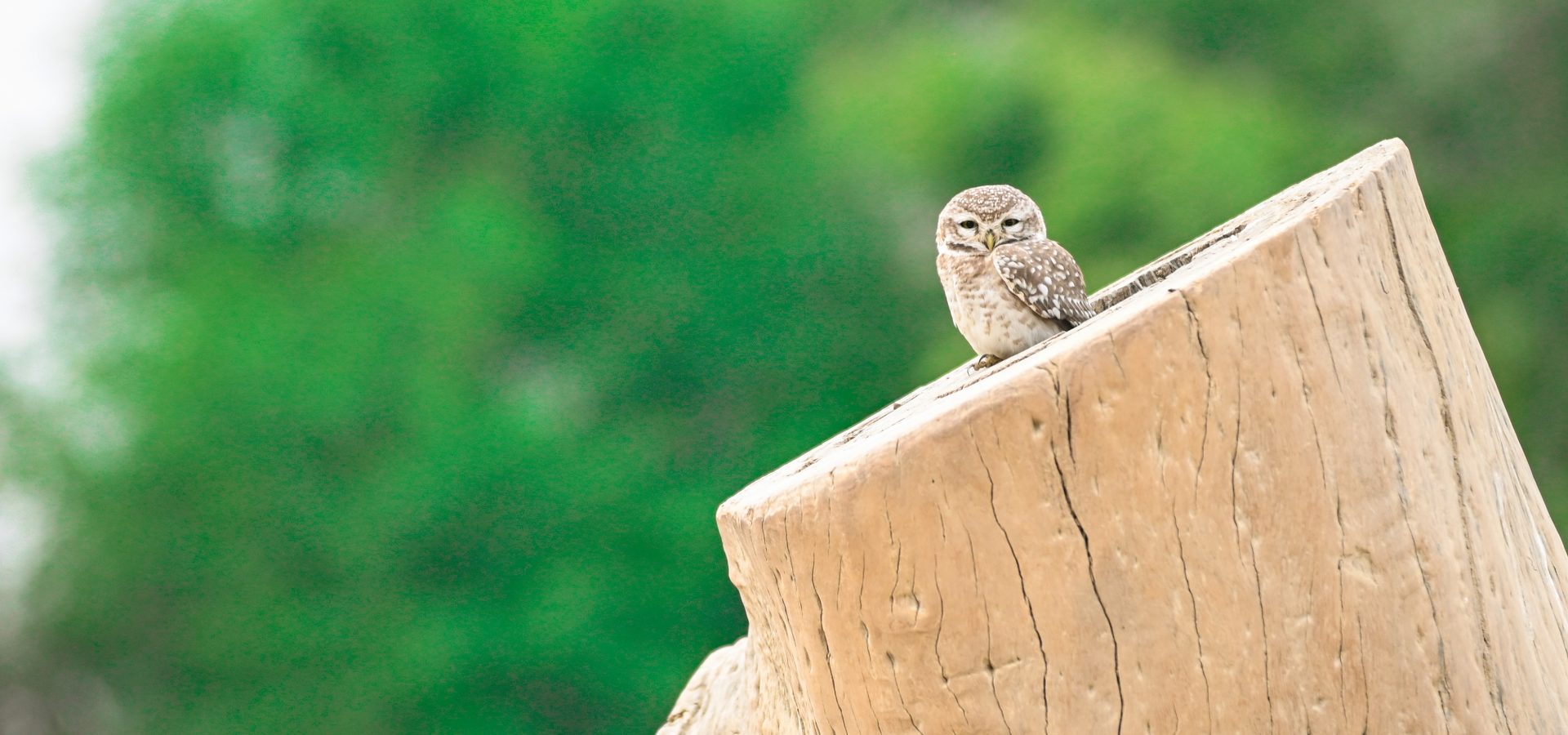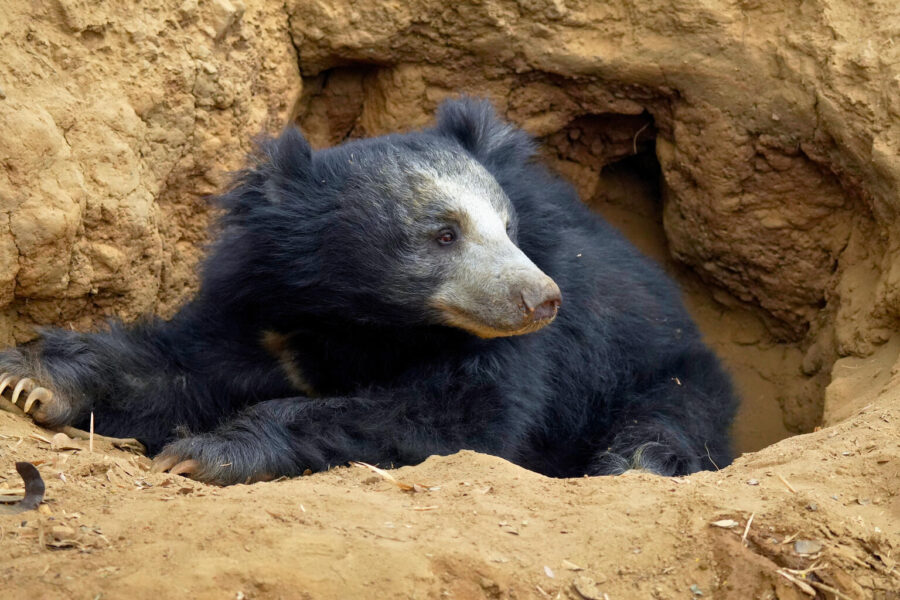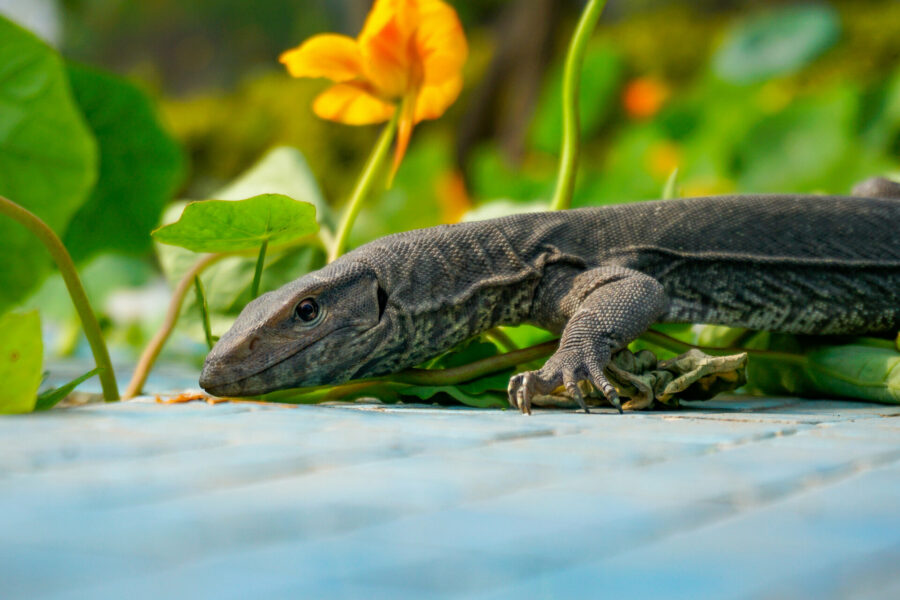As the sun sets and darkness blankets the land, a rather mystical figure takes flight. This is no caped knight from a film, but nature’s very own superhero: the owl. With an ability to navigate without leaving a trace and hunt with unparalleled precision, they have captured our imagination since time immemorial. Found in myths and folklore worldwide, the raptors can boast of a rich cultural significance. These nocturnal denizens have been associated with wisdom, magic, and even doom! With every adaptation tailor-made to survive through day and night, these birds have fascinated us in more than one way.
On International Owl Awareness Day, let’s dive into the realm of these raptors. Read on as we discover the secrets of their vision, habitat, diet, and the challenges they face in the ever-evolving world.
Where can One Spot them?
Spotting owls can prove to be an adventure, as these birds inhabit a diverse array of landscapes. From lush forests and grasslands to barren mountains and marshy riversides, the raptors have adapted to repurpose various habitats. Not only in the serene wilderness, several birds can be found amidst the hustle and bustle of crowded cities as well.
The most cosmopolitan of all are the barn owls, omnipresent across the country. As inhabitants of cities, they efficiently contribute to pest control. These adaptable birds often dwell in abandoned buildings, chimneys, and tree holes, making them a common find among urban wildlife.
Interestingly, different species showcase a variety of roosting preferences. Smaller raptors such as spotted owlets seek shelter in tree hollows, while their larger counterparts, like the dusky eagle owl, perch gracefully on tree branches. Birds, such as the mottled wood owl, tend to roost at specific spots that local forest guides in protected areas can often pinpoint with precision!
How Unique is Their Vision?
Owls possess a unique and remarkable vision that sets them apart from other birds. Their binocular vision, with a narrow field of view, grants them exceptional depth perception, crucial for low-light hunting. These raptors have large eyes that remain fixed in their sockets, which means they cannot roll their eyes. However, they have an astonishing ability to swivel their heads up to 270 degrees — a biological adaptation that allows them to see in many directions without moving the rest of their bodies.
They can turn their heads in either direction, without causing any damage to blood vessels, owing to the 14 vertebrae that are present in the neck region! Various species, such as the Indian eagle owl, make use of this remarkable capability to become formidable predators as it allows them to detect even the slightest movements of their prey.
What do they Feed on?
Owls display an impressive range of dietary preferences, tailored to their specific habitats and hunting strategies. Fish owls, characterised by their proximity to water bodies, primarily feed on fish and amphibians. Mottled wood owls, with their adept hunting skills, favour a diet of small mammals such as rodents and hares.
The versatile barn owls are known to be efficient pest controllers as they target rodents, bats, frogs, and lizards for their appetite. A family of five owls can consume up to 3,000 rodents in a single breeding season! Their role as biocontrol agents subsides the need for pesticides and insecticides, thus promoting a healthier ecosystem. Additionally, these raptors contribute to disease prevention, thus impeding the spread of zoonotic diseases.
Notably, owls lack a crop, which is a specialised sac found on the throat of birds to store food. Instead, owls swallow their prey whole or in parts, and regurgitate indigestible remains, such as bones, fur, and teeth in the form of pellets.
How do they Blend in with the Environment?
Owls have perfected the art of camouflage, making them masters of blending in with their surroundings. Scops owls have brown, black, or grey-coloured feathers that allow them to seamlessly match the area they inhabit. This enables them to become nearly invisible against the backdrop of tree bark, where they prefer to roost. The collared scops owl and the Indian scops owl are prime examples of this incredible camouflage. When threatened, they remain motionless, tightening their bodies to imitate a branch, making it difficult for predators or curious observers to spot them!
Do all Look the Same?
With over 240 species of owls distributed across the world, India is home to over 32 species. While they may look the same to a layperson, each of these species is unique and captivating in its own way.
Owls are categorised into two families — true owls (Strigidae) and barn owls (Tytonidae). True owls possess distinct features such as large, coloured eyes, and the presence of ear tufts. Barn owls, on the other hand, are characterised by their smaller size, small dark eyes, and heart-shaped faces.
Some raptors that are found in India have their own pronounced characteristics — for instance, the spot-bellied eagle owl has heart-shaped spots and a prominent yellow beak, while the dusky eagle owl has pointy ear tufts. The Asian barred owlet, with its distinct barred and streaked bodies, is another example of how these birds come in a captivating array of appearances.
What do these Birds Sound Like?
Despite their silent flight, owls are vocal birds. They are known for their distinctive and often eerie vocalisations, which vary among owl species. While the hooting sound is commonly associated with owls and is often portrayed in popular culture, not all owls produce hoots. These birds create a symphony of sounds that may range from hoots to whistles, screeches to screams, purrs to snorts, and chitters to hisses.
The hissing and screeching calls of barn owls can be heard for long distances, even in urban environments. The mottled wood owl uses loud and distinct hoots as its signature call, revealing its location. Hoots usually serve as territorial calls and may even be associated with courtship rituals.
Are all Active at Night?
The phrase “night owl” can sometimes be misleading since not all of them are active at night. These birds exhibit a fascinating range of activity patterns, with some strictly adhering to night-time hunting, while others actively hunt during both day and night. The great horned owl and barn owl are classic examples of nocturnal raptors.
However, the Indian scops owl is a crepuscular species, actively hunting during the transitional periods of dusk and dawn. The brown fish owl can be spotted hunting during both day and night, capitalising on the availability of fish and aquatic crustaceans. It is interesting to note that the diverse activity routines of owls are often dictated by prey availability.
For most species, a quick pointer to know when an owl comes out to hunt can be the colour of its eyes! Dark eyes generally mean the bird is nocturnal; orange eyes denote crepuscular raptors; and yellow eyes would mean that the bird is diurnal.
Are they Threatened?
Like many other species, owls face a multitude of threats that endanger their survival in the wild. In addition to being hunted for illegal trade, their habitats are under siege due to extensive deforestation, urbanisation, pollution, and climate change. These disruptions in their natural environment make it challenging for the raptors to find suitable nesting sites and hunting grounds.
Additionally, one of the major dangers they encounter is illegal trade, driven by superstitious beliefs and black magic practices. Various parts of these birds, including their ear tufts, bones, and organs, are sought after for use in rituals, perpetuating harmful myths. This alarming trade puts additional pressure on their populations, exacerbating their vulnerability.
All owl species found in India are protected under the Indian Wildlife (Protection) Act, 1972 and listed under Appendix II of CITES (Convention on International Trade in Endangered Species of Wild Flora and Fauna). Recently, a barn owl, found with an injury on its wing inside the Parliament building in New Delhi, was successfully rescued by the Wildlife SOS Rapid Rescue Unit. Similarly, you can alert Wildlife SOS on our emergency helplines (Delhi NCR: +91 9871963535, Vadodara: +91 9825011117, Agra: +91 9917109666, and Jammu and Kashmir: +91 7006692300, +91 9419778280) if you see any wild animals in distress.





